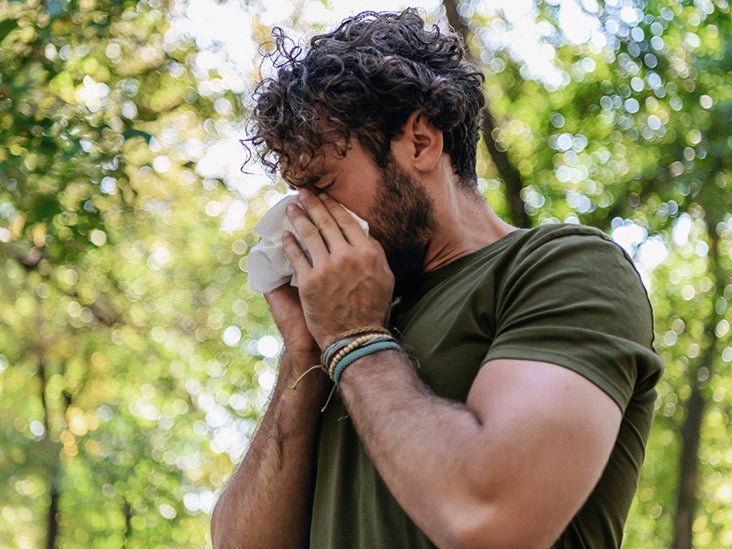Infection
Tracheobronchitis: Symptoms, causes, treatment, and more
Tracheobronchitis is a respiratory condition where the main symptom is a productive cough. Viruses — such as those that cause colds and flu — underlie most cases.
The term “tracheobronchitis” describes inflammation of the windpipe, which doctors also call the trachea, and the major air passages connecting the trachea to the lungs. Doctors call these passages the bronchi.
Treatment usually involves medications and home-care measures to relieve symptoms and make a person more comfortable. In some cases where bacteria causes tracheobronchitis, a person may require antibiotic treatment.
This article discusses tracheobronchitis, including the symptoms, causes, risk factors, treatments, diagnosis, potential complications, and a person’s outlook. It also examines whether a difference exists between tracheobronchitis and bronchitis.
According to a 2018 review, the terms “tracheobronchitis” and “acute bronchitis” are often interchangeable. “Acute” means the condition lasts only a few weeks.
Simply put, the difference between the two relates to where the inflammation occurs. In tracheobronchitis, inflammation occurs in the trachea, whereas in bronchitis, inflammation occurs in the bronchi only.
To differentiate them, a doctor may need to perform some tests, such as imaging or assessing symptoms. Otherwise, the differences between both conditions are not significant, especially regarding how doctors treat them.
One difference is that tracheobronchitis may involve a sore throat and can cause stridor, which is noisy breathing due to obstructed airflow in the airways. This can result in feeling unable to take a deep breath.
Tracheobronchitis is not another term for chronic bronchitis, which can last at least 3 months out of the year for 2 consecutive years.
The symptoms of tracheobronchitis can include:
Symptoms can linger for up to 3 weeks.
Causes include:
Microbial infections
Bronchitis due to microbial infections affects about 5% of adults each year, and the majority occur in the fall and winter, reports a 2018 review.
The most common cause is community-acquired infections. About 95% of the time, these entail viruses, such as those that cause:
The infections may also stem from bacteria, such as:
- Chlamydophila pneumoniae
- Bordetella pertussis
- Mycoplasma pneumonia
Additionally, fungal infections — such as Aspergillus — are sometimes a cause.
Ventilator-associated infections
While this cause is also due to microbial infections, the circumstances differ.
Ventilator-associated infection is a frequent complication in people in intensive care units, specifically those who need a mechanical ventilator to help them breathe, according to a 2019 study. It can happen when a person has used a ventilator for at least 48 hours.
This condition can lead to ventilator-associated pneumonia, an infection affecting the tiny air sacs in the lungs.
Other causes
These include allergens and irritants, which may involve:
These include:
- having a condition that limits immunity
- having a job that involves frequent exposure to lung irritants
- smoking or having frequent exposure to second-hand smoke
- having a family history of respiratory issues
Diagnosing tracheobronchitis may involve the following:
- Physical exam and medical history: This includes noting symptoms, particularly whether the person has a productive cough with clear or yellowish sputum. Factors that indicate the severity of the condition include:
- breathing rate
- temperature
- pulse rate
- oxygen saturation
- Blood count: If fever is present, there may be an elevation in white blood cell counts.
- Chest X-ray: This usually appears normal but can help differentiate tracheobronchitis from pneumonia.
- CT scan: This can help with evaluating the lungs.
Treatment of standard cases of tracheobronchitis differs from cases associated with a ventilator.
Standard cases
Cases of tracheobronchitis due to colds, flu, and viral infections usually get better without antibiotics.
Consequently, treatment typically consists of medications and home-care measures to relieve symptoms and make a person more comfortable. These may include:
- medications to reduce pain and fever, such as acetaminophen (Tylenol)
- anti-inflammatory medications called steroids, such as prednisone (Deltasone)
- nonmedication measures, such as:
- drinking hot tea and plenty of fluids
- sucking on throat lozenges, if the person is over 4 years old
- taking ginger
- getting plenty of rest
- using honey to relieve coughs
- breathing steam from a bowl of hot water
- using a humidifier or cool mist vaporizer
Learn more about home remedies for bronchitis.
Treatment of ventilator-associated cases
A doctor may choose to treat ventilator-associated tracheobronchitis cases with antibiotics. This is likely due to the risk of ventilator-associated pneumonia.
In standard cases, the condition usually goes away within 3 weeks.
Although most people recover without complications, some can develop pneumonia. Additionally, the medical literature contains rare reports of acute respiratory distress and respiratory failure, which is the inability of the lungs to function, following inflammation of the bronchi.
Because of the possibility of complications, a person should see a doctor if they have difficulty breathing or a cough with bloody mucus.
Individuals with ventilator-associated tracheobronchitis are seriously ill. This condition can be fatal. If it leads to pneumonia, the risk increases.
Tracheobronchitis may cause symptoms that include coughing, a sore throat, and tiredness. Causes can include viruses, bacteria, and air irritants.
Doctors can diagnose the condition with a physical exam and medical history, but blood tests and other diagnostic tools are sometimes necessary. Although most people with tracheobronchitis recover on their own, complications such as pneumonia may sometimes occur.
Standard cases do not require treatment with antimicrobial medication. Instead, doctors may recommend medications for pain and fever, such as acetaminophen (Tylenol), and home-care practices, such as drinking plenty of fluids.
Nonstandard cases involve individuals in intensive care units who use a ventilator. While there are no set medical guidelines for treatment for these cases, some doctors may recommend antimicrobial medications. Ventilator-associated tracheobronchitis can be life threatening.

